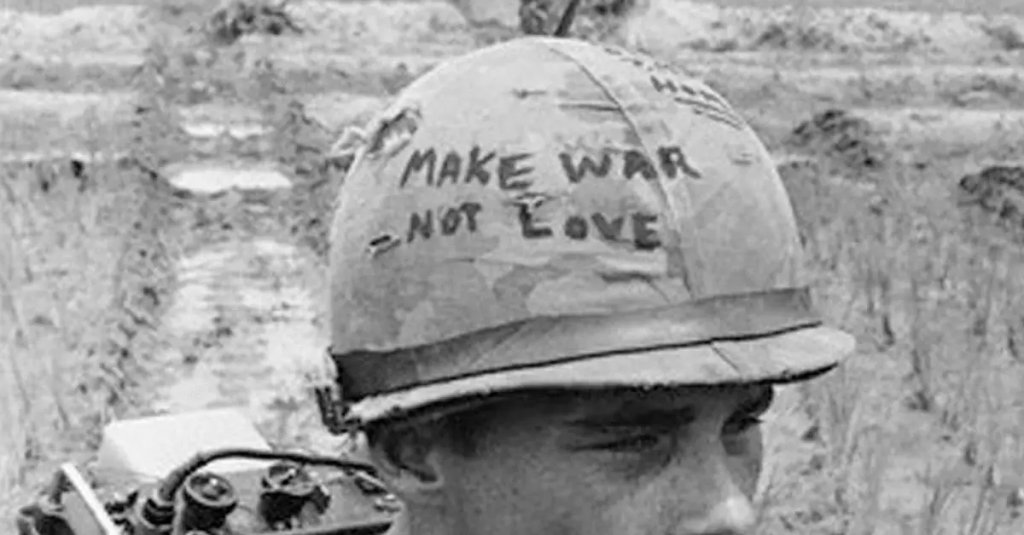

One of the enduring images of the Vietnam War is one of the Army or Marine Corps’ infantry troops, sitting out in the jungle or around a rice paddy, wearing a helmet covered in graffiti. Maybe it’s ticking off the number of days he’s been in country. Maybe it’s announcing to the world that the wearer is a bad motherf*cker. Or it could be simply the troop’s blood type and drug allergies. Truth be told, troops in Vietnam didn’t “get away” choosing to write on their helmets that were issued to them, and neither do the troops who do it today.

As one might imagine, it would be considered counter to good order and discipline to write on one’s helmet cover. The helmet is, after all, a uniform item, usually owned by the government. To deface it would be defacing government property while at the same time violating the rules of wearing your uniform properly. But none of this ever prevented the troops from doing it.
Some troops in Vietnam only ever wore their helmets when doing perimeter duty or moving materiel from one area to another and didn’t really have the downtime with their helmets to make any sort of writing on it. For those who did write on their helmet covers, they’ll tell you there were more important things happening than worrying about what was written on their helmets.
Of course, the difference between troops back then and troops today is that yesteryear’s combat troops could be draftees, which means they’re not the professional army the United States uses as the backbone of its military power. Even so, those who wrote on their helmets were not allowed to wear the helmet with its cover on while in the rear. The MPs would make sure of that. In any case, soldiers were required to wear a cap while in the rear, and the helmet would go back on only when they went back into the sh*t, where no one cared what they wrote anyway.

Vietnam veterans say the graffiti depended on which outfit you were moving with, and was usually okay as long as it didn’t defeat the purpose of camouflage in combat. Others say that as long as the graffiti didn’t disparage the Army, the United States, or the chain of command, it didn’t matter what you wrote or how you wrote it.
If a new NCO or lieutenant was coming into Vietnam for the first time and all he cared about was helmet covers, his troops would call him “dinky dao” anyway.
